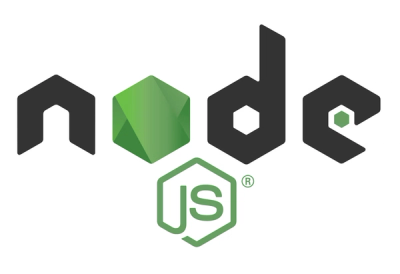
Security News
Django Joins curl in Pushing Back on AI Slop Security Reports
Django has updated its security policies to reject AI-generated vulnerability reports that include fabricated or unverifiable content.
accessible-autocomplete
Advanced tools
:warning: WARNING: This project is still experimental / under development. Do not use in production. :warning:
accessible-autocomplete is a JavaScript autocomplete built from the ground up to be accessible. The design goals are:
Install it by running:
npm install --save accessible-autocomplete
Import it using a module system like Webpack:
import accessibleAutocomplete from 'accessible-autocomplete'
Or using a script tag:
<script type="text/javascript" src="node_modules/accessible-autocomplete/dist/accessible-autocomplete.min.js"></script>
And then call the accessibleAutocomplete function, providing a suggestion engine:
function suggest (query, populateResults) {
const results = [
'France',
'Germany',
'United Kingdom'
]
const filteredResults = results.filter(result => result.indexOf(query) !== -1)
populateResults(filteredResults)
}
accessibleAutocomplete({
element: document.querySelector('#my-autocomplete-container'),
id: 'my-autocomplete',
source: suggest
})
Don't forget to include the stylesheet:
<link rel="stylesheet" href="node_modules/accessible-autocomplete/dist/accessible-autocomplete.min.css" />
:warning: WARNING: This is a work in progress and will change significantly. :warning:
elementType: PropTypes.instanceOf(HTMLElement)
The container element in which the autocomplete will be rendered in.
sourceType: PropTypes.func
Arguments: query: string, populateResults: Function
Similar to the source argument for typeahead.js, a backing data source for suggestions. query is what gets typed into the input field, which will callback to populateResults synchronously with the array of string results to display in the menu.
An example of a simple suggestion engine:
function suggest (query, populateResults) {
const results = [
'France',
'Germany',
'United Kingdom'
]
const filteredResults = results.filter(result => result.indexOf(query) !== -1)
populateResults(filteredResults)
}
autoselect (default: false)Type: PropTypes.bool
Set to true to highlight the first option when the user types in something and receives results. Pressing enter will select it.
cssNamespace (default: 'autocomplete')Type: PropTypes.string
The default CSS classes use BEM with autocomplete as the block name. If you already have CSS rules for .autocomplete--menu or any of the other default classes, you can use this property to rename them and prevent clashes.
TODO: Better styling docs.
defaultValue (default: '')Type: PropTypes.string
Specify a string to prefill the autocomplete with.
displayMenu (default: 'inline')Type: PropTypes.oneOf(['inline', 'overlay'])
You can set this property to specify the way the menu should appear, whether inline or as an overlay.
id (default: 'autocomplete')Type: PropTypes.string
The id for the autocomplete input field, to use with a <label for=id>. Required if you're instantiating more than one autocomplete in one page.
minLength (default: 0)Type: PropTypes.number
The minimum number of characters that should be entered before the autocomplete will attempt to suggest options. When the query length is under this, the aria status region will also provide helpful text to the user informing them they should type in more.
name (default: 'input-autocomplete')Type: PropTypes.string
The name for the autocomplete input field, to use with a parent <form>.
onSelect (default: () => {})Type: PropTypes.func
Arguments: selected: Object
This function will be called when the user selects an option, with the option they've selected.
selectOnBlur (default: true)Type: PropTypes.bool
Set this value to false to stop the autocomplete from automatically confirming a value when it has been selected using autoselect or the keyboard and the user "blurs" (clicks outside of the component).
showNoOptionsFound (default: true)Type: PropTypes.bool
Set this value to false to not display the "No options found" template when there are no results available. Some autocompletes might intermittently display results between different search term roots (like one based on lunrjs), and as such wouldn't need to use this.
templates (default: undefined)Type:
PropTypes.shape({
inputValue: PropTypes.func,
suggestion: PropTypes.func
})
This object defines templates (functions) that are used for displaying parts of the autocomplete.
inputValue is a function that receives one argument, the currently selected suggestion. It is used to populate the value of the input field, and should return a string.
suggestion is a function that receives one argument, a suggestion to be displayed. It is used when rendering suggestions, and should return a string, which can contain HTML. :warning: Caution: because this function allows you to output arbitrary HTML, you should make sure it's trusted, and accessible.
placeholder (default: '', :warning: not recommended :warning:)Type: PropTypes.string
This option will populate the placeholder attribute on the input element.
We think placeholders have usability issues and that there are better alternatives to input placeholder text, so we do not recommend using this option.
If your autocomplete is meant to select from a small list of options (a few hundreds), we strongly suggest that you render a <select> menu on the server, and use progressive enhancement.
If you have the following HTML:
<select id="location-picker">
<option value="fr">France</option>
<option value="de">Germany</option>
<option value="gb">United Kingdom</option>
</select>
You can use the accessibleAutocomplete.enhanceSelectElement function to enhance it into an autocomplete:
accessibleAutocomplete.enhanceSelectElement({
selectElement: document.querySelector('#location-picker')
})
This will:
<select>defaultValue to the select's option[selected]id to the <select>'s idname attribute to '' to prevent it being included in form submissionssource to a basic one that uses any existing <option>s from the <select><select> using inline display: none<select>'s id to ${id}-select to decouple from any <label><select>This function takes the same options as accessibleAutocomplete, with the only difference being that it uses selectElement instead of element, which needs to be an instance of HTMLSelectElement.
Note: The
accessibleAutocomplete.enhanceSelectElementfunction is fairly light and wraps the public API foraccessibleAutocomplete. If your use case doesn't fit the above defaults, try reading the source and seeing if you can write your own.
The following events get triggered on he input element during the life cycle of the autocomplete:
onSelect - This function will be called when the user selects an option, with the option they've selected.Example usage:
accessibleAutocomplete({
// …
onSelect: (val) => {
track(val)
}
})
accessible-autocomplete was built after studying many existing solutions and prototyping patches to fix user experience or accessibility issues. It draws heavy inspiration from the following (and a lot of others):
Check out the CONTRIBUTING guide for instructions.
If you want to help and want to get more familiar with the codebase, try starting with the "good for beginners" issues.
MIT.
0.6.0 - 2017-05-10
accessible-typeahead to accessible-autocomplete.defaultValue when progressively enhancing.enhanceSelectElement is called without a selectElement.accessibleAutocomplete is called without element or source.FAQs
An autocomplete component, built to be accessible.
The npm package accessible-autocomplete receives a total of 76,450 weekly downloads. As such, accessible-autocomplete popularity was classified as popular.
We found that accessible-autocomplete demonstrated a healthy version release cadence and project activity because the last version was released less than a year ago. It has 0 open source maintainers collaborating on the project.
Did you know?

Socket for GitHub automatically highlights issues in each pull request and monitors the health of all your open source dependencies. Discover the contents of your packages and block harmful activity before you install or update your dependencies.

Security News
Django has updated its security policies to reject AI-generated vulnerability reports that include fabricated or unverifiable content.

Security News
ECMAScript 2025 introduces Iterator Helpers, Set methods, JSON modules, and more in its latest spec update approved by Ecma in June 2025.

Security News
A new Node.js homepage button linking to paid support for EOL versions has sparked a heated discussion among contributors and the wider community.